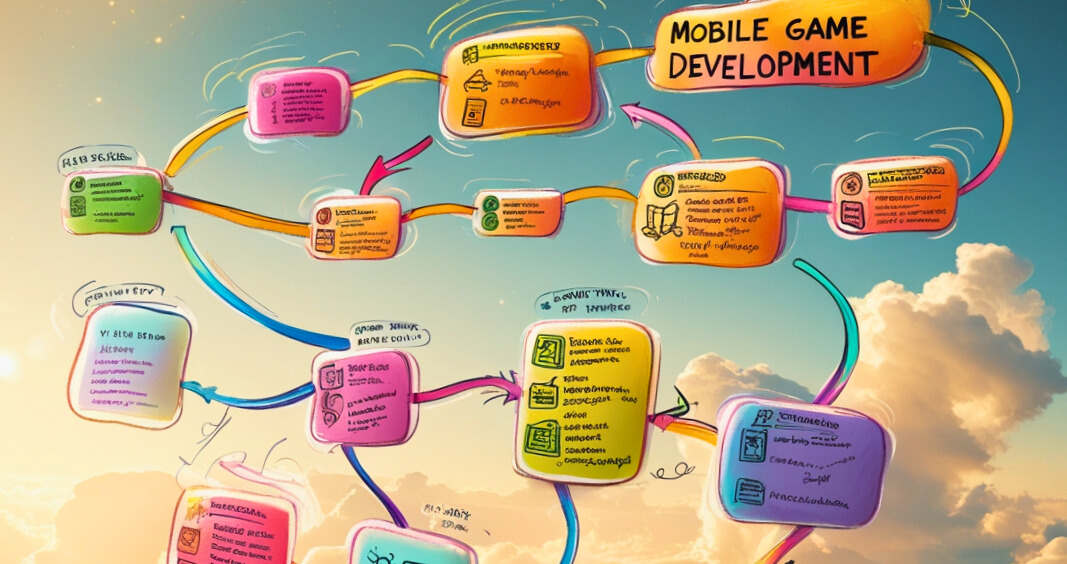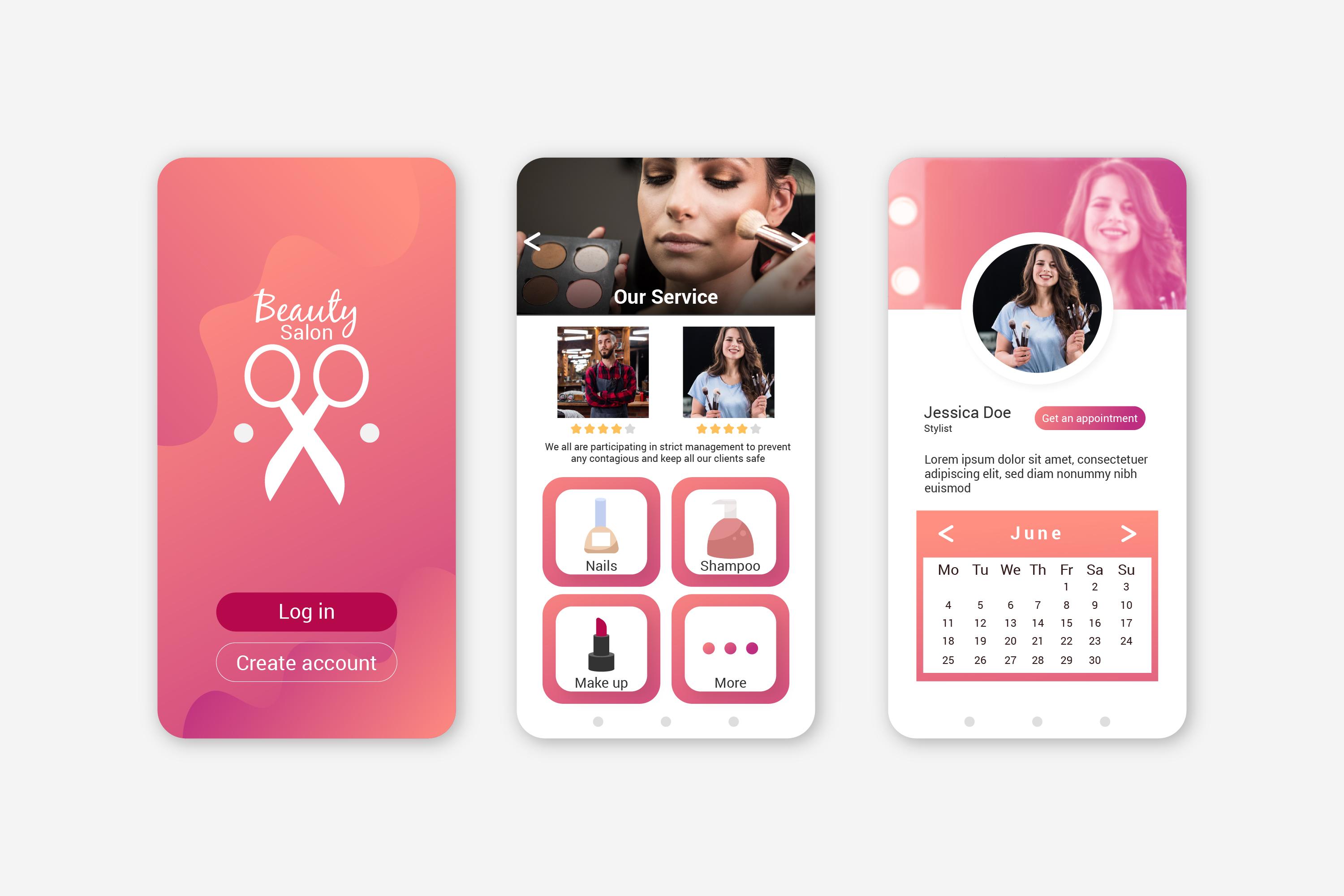Creating a mobile game can be an exciting and fulfilling activity, but it takes appropriate strategy, effort, and knowledge of both the creative and technical sides of game development. You need to have everything in place from the time you have the idea for the game to the time it is available in the app store. In this blog, we will go through the steps necessary for developing a mobile game, starting from the concept phase, all the way to the launch.
3.1. Concept and Planning: Everything Starts Here
The idea for a mobile game is the first and most critical step. It is the idea that will guide all other processes. This is the stage where you need to think about what kind of game you will be making and who the game will be for. If you are creating a casual puzzle game or an action adventure game, this should be the stage where you decide on these key elements.
Key Points To Remember:
• Genre: Decide on the genre of your game. Will it be an action game, puzzle game, RPG, or a strategy game? The chosen genre will determine the game’s mechanics, its controls, and its overall design.
• Target Audience: Who are you designing the game for? Knowing the demographic you are targeting will help craft an appropriate game story, visuals, and level of difficulty. For example, games meant for children would have vibrant graphics, simple mechanics, and fun characters, while adult oriented games have intricate plots and themes.
• Platform: Choose on which platforms the game will be available (Android, IOS, or both of them). This is crucial as it affects your choice of the design and development tools. If you're planning to launch on both platforms, you might want to consider hybrid applications.
• Monetization Strategy: What monetization schemes do you intend to adopt for your game? Common monetization strategies include in-game purchases, advertisements, and paid game downloads. Having this figured out early will impact the design and features of the game.
At this stage, it is also wise to write a Game Design Document (GDD). This document includes the outlines of gameplay mechanics, characters, levels, story, art style and everything else that needs to be done towards the game. It is a plan to be followed and acts as a guide throughout the whole process of development.
3.2. Game Design: Transforming Imagination into Reality
Now that you understand the ideas clearly, it is time to develop the game. The creation of your game is categorized into three parts: conceptual, where you provide the idea and structure; visual, where you give personality to your characters, scenes, and the game’s world; and audio, where you supply the needed sound effects and music to combine everything. This includes everything such as character creation, level designs, and even the UI (User Interface).
Things That Matter:
• Characters and Story: If you have a story, you will need to design your characters. You need to come up with characters that are interesting and are multi-faceted. These can be Avatars or NPCs, and even Antagonist roles. Even for casual games, having a well crafted story facilitates immersion and makes the game more fun.
• Level Design: How will the user flow in your game? Keeping players engaged requires designing compelling levels, each more challenging than the last. Users must find your level stimulating, but not over-the-top challenging that makes them want to quit the game.
• Art and Animation: User experience is greatly impacted by graphics and how a game is visually presented. The game’s graphics style, its animations, and overall look must be appealing and follow a consistent style. Smooth and elegant animations, when done correctly, can significantly improve user satisfaction.
*Sound and Music*: Players are more engaged when sound effects and music are featured. Sound can also be used as a medium to communicate or inform players about various activities within the game (e.g., when a level is completed or a game is won). The soundtrack of a game's score can be used also to affect the player's emotions and feelings.
Anticipating UI (User Interface) and UX (User Experience) is equally important. How will players access the game? Menus have to be straightforward, and players should be able to use the game as soon as it loads.
3.3 Development: Everything is Done for the Game – Now Comes the Hard Part - It Needs to Be Built.
Having an idea is great, but starts becoming a reality once it is put down on paper, and that is the stage of the development process we have just discussed above. This is where the most engaging part of the development occurs. Programmers write the code for the game's functionalities such as brilliant graphics and exciting mechanics.
Development Steps:
- Picking the Right Game Engine: The choice of a game engine is to select a gaming tool that suites all developments to be done on the game. For mobile games, Unity, Unreal Engine, and Godot are the most popular. The best engines are those that best suit the type if game being developed, the experience of the developers, and the budget available.
o Unity excels at Android and iOS development in both 2D and 3D games due to its powerful cross-platform capabilities.
o High-end graphic games are best suited for Unreal Engine; however, they may require more coding skills, powerful computers, and advanced gaming engines.
o Smaller organizations can utilize Godot because it is an open-source engine that enables launch and development of 2D and 3D games.
• Game Development: A game developer will code the logic of the game, including the rules, character movements, interactions, and gaming physics. This also includes programming the player such as what actions they can perform (running, jumping, etc), AI actions, leveling up, and other gameplay functions.
• Developing Debugging: During the process of polishing the game, developers regularly test components to ensure they are working as planned. Developers solve bugs, enhancements, and ensure the game performs as it should on the targeted devices.
3.4 Testing. Protecting the Standard.
Ensuring that the game is functional and enjoyable to play is not as easy as it sounds. Various tests must be implemented.
• Alpha Testing. This phase follows the completion of the game and is usually conducted by your own staff, focusing on the detection of core bugs and other technical defects.
**Beta Testing:** After completing the alpha phase, you can allow a small number of external testers to play the game. This group helps with giving feedback regarding the areas such as gameplay, user experience, and any bugs that can be identified and were not noticed during the alpha test.
**User Testing:** The objective of user testing is to see how real players interact with your game. Seeing players will provide you with information about game flow, level of difficulty, and satisfaction from the game.
No matter the approach selected, feedback from testers is invaluable. By utilizing the pain points, bugs, or areas of improvement identified early on, educators will be able to address the emerging issues that can arise after the game is released to the general public.
3.5 helps Explain what happens after refining your game. Reaching your audience through marketing efforts targeting your specific app plays a crucial role in how successful the app store will be.
Key Steps for Launching:
- One of the first things you will want to do is create marketing content. Posting teasers on your social media, whether through influencer marketing or banners helps give traction to your game even before everyone gets access to it.
- As a last step, submitting to App Stores: Once your game is ready, you have to submit it to the Apple App Store or the Google Play Store for download. Most people come across these games, and with the right style, you can make them competitive on the platform.
‘’ Marketing Campaign. Start marketing the game well before it launches by promoting the game’s trailers and teaser videos. Also, showcase portions of the game’s gameplay on social media and websites’’\
3.6 Post Launch-Keeping Players engaged.
2. Provides regular updates, bug fixes and new content. Make sure to monitor the feedback and resolve any issues timely.
Post launch strategies.
1. Updates and improvements. Make regular updates to the game that fix bugs, add new levels or content in order to maintain player engagement.
2. In-app events and Challenges. Host in-app events or challenge the players to return to the game within a time limit.
• Monitor Analytics: With the help of analytics, understand player behavior, retention metrics, and in-app spending. These aspects help you polish your game to attract and engage users while increasing revenue.
The period from conception until the game launch feels stretched, but it is equally exhilarating. Sticking to a well-defined development roadmap along with ideation and post-launch maintenance will ensure that players appreciate your mobile game and it succeeds in the crowded marketplace. With creativity, grit, and quality focus, your mobile game can become a success globally.






